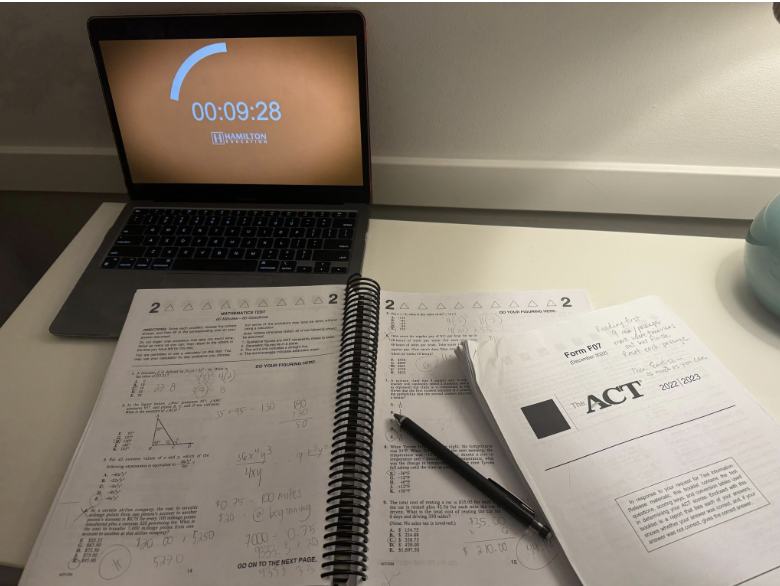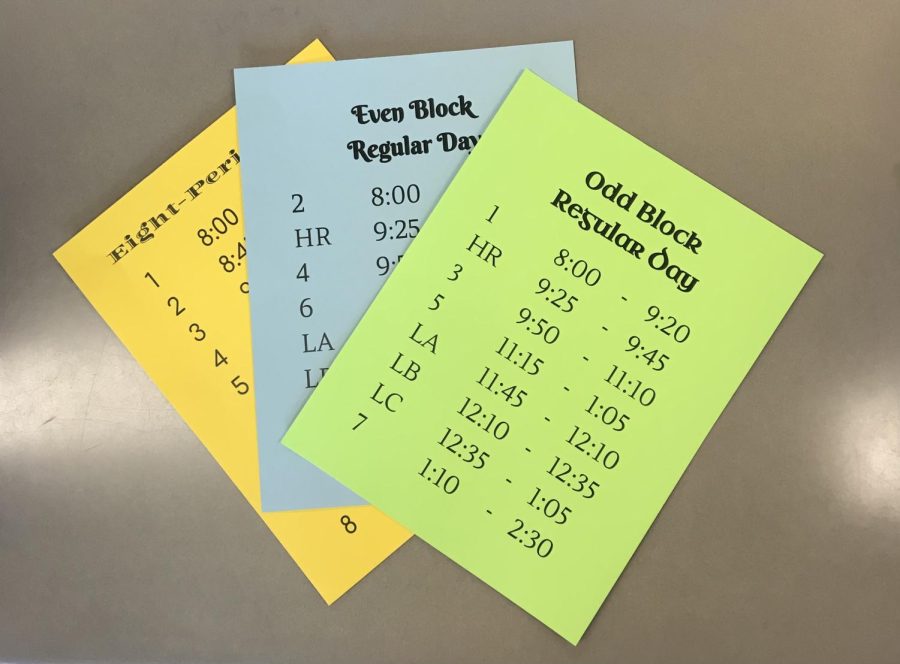The Future of BSM: Schedules
This year, BSM classrooms are adorned with a plethora of specific schedules.
Over the past few years, BSM has been characterized by a constant evolution of schedules. These changes, and the abrupt recalibration they bring, have prompted a discussion over both the recent evolution of BSM’s schedules as well as what the future may look like.
BSM’s current student body has experienced more schedule changes than most former students, with the current graduating class having adapted to three different schedules in its four years of high school. By contrast, veteran teachers who have taught at BSM for over two decades remember five total iterations: a seven period day, an eight period day, an eight period day with two block days, last year’s quarter-blocks, and this year’s alternating blocks with an additional eight period day.
Most current students began at BSM during the eight period/block day mix: Monday, Tuesday, and Friday were eight period days, while Wednesday and Thursday were alternating blocks. In general, teachers have a favorable opinion of this schedule. “I think I appreciated the eight period day with the occasional block because you could plan for one day [where] we’re going to have a chunk of time to really get into good discussions, but every other day you keep people’s attention,” English teacher Katie Belanger said.
Last year, BSM switched to a quarter block schedule, in which students had four block classes each day per quarter. The primary goal of this schedule was to alleviate stress––especially important during the height of the Covid-19 pandemic––by simplifying students’ workload. Unfortunately, the appeal of this innovative approach quickly wore off as various flaws appeared. Most problematic were gaps between quarters, as many students had one or even two quarter breaks between classes, and this interrupted some curriculums in unproductive ways. Science teacher Lisa Bargas says that although she understood the philosophy behind the approach and was initially intrigued, she quickly realized it simply wasn’t effective. “It became evident pretty quickly that it didn’t really work very well… even with those blocks, I didn’t cover nearly the content that I covered in a regular year,” Bargas said.
This year, BSM has drawn elements of previous schedules to arrive at a full block schedule: Monday through Thursday alternate between odd and even blocks, while Friday returns to an eight period day. Essentially, it aims to combine the most widely favorable elements of the past two years into one package: the consistent structure of the old eight period/two block schedule and the extended class periods from last year’s quarter block schedule. Though it’s too early to arrive at a definitive conclusion, initial perceptions are positive. “I think it’s the best schedule we’ve had in a while,” English teacher Calli Olson said.
In order to understand what schedules could look like going forward, one first needs to establish which aspects of past schedules have been successful. Block scheduling, a central aspect of BSM’s most recent schedules, adds time for teachers to explain complicated lessons. It is for this reason that blocks have fundamentally changed the way BSM teachers navigate their curriculum, shifting the focus away from constant, daily progression towards mastery of the material. Although not entirely on board with BSM’s current schedule, math teacher Rosalie Goldberg does see value in longer periods for this exact reason. “One thing I like about the blocks is that if I have a tough concept to cover or a tough thing to do, I don’t feel pushed, I don’t feel rushed, I don’t feel like I have to suddenly cram it in,” Goldberg said.
While blocks are generally viewed in a positive light, the question of how many blocks there ought to be in a school week remains. Since each of the last three school years has presented a different combination of regular and block days in a week, members of the BSM community have gotten a taste of many different arrangements. “Right now, I kind of like a mix of regular days and block days…This , I’m not sure about. I’ll have to see how it goes,” Goldberg said.
Some teachers see another option. Those who have taught under a seven period day prefer the slightly longer class periods over their shorter eight period day counterparts. History teacher Ken Pauly, a former Minnetonka High School teacher, is familiar with such a schedule from his time at the school, as well as during its existence at BSM many years ago. “I was always a fan of the seven period day. I was never really a fan that we went to an eight period day. So if I could wave my Dumbledore wand, it would be seven periods, 50 minutes,” Pauly said.
Pauly isn’t alone in his preference for a seven period day. Bargas also used to teach at Minnetonka, and she favors shortening the regular day as well. “I guess my preference would be a seven hour [period] day with two block days… and then instead of eight 40 minute classes, seven 50 minute classes. To me, that feels the best,” Bargas said.
One thing is certain: an eight period day is restrictive for many teachers, and even those who don’t prefer block days recognize the benefit longer class periods provide. “40 minutes every single day is way too short. I feel like I’m yelling at kids as they walk out the door like, ‘we just got to the meat of it!’ and you’re gone,” Olson said.
Ultimately, each schedule has its strengths and weaknesses. Some departments benefit from longer class periods, some from shorter. But even within departments, Belanger explains that no two classes have the same needs, and that the ideal schedule for one class won’t necessarily work for another. “I think the same is true from our department to other departments, that there’s not a one size fits all. It’s really a case-by-case basis,” Belanger said.












































